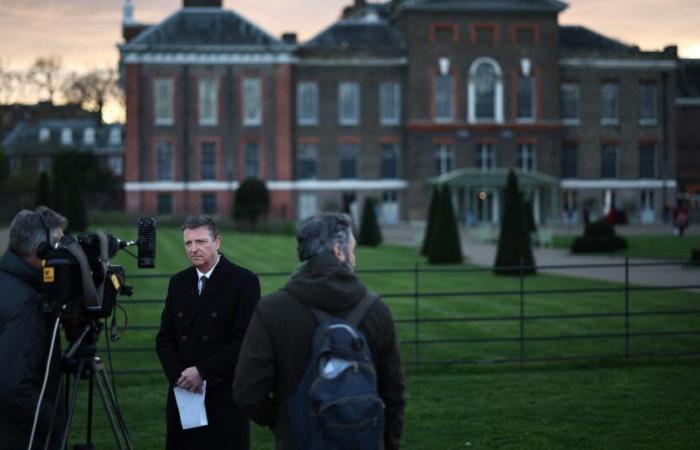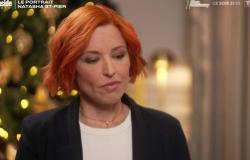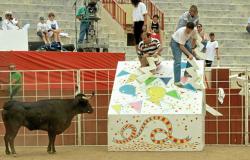
They track the every move of the English royal family. And are in the good books of Buckingham Palace, unlike the royal specialists of the tabloids… provided they respect the rules of the game.
In London they are called the “Royal Watchers”. As their name suggests, these journalists constantly follow members of the royal family. At Buckingham or around the polo fields, they scrutinize their every move, share cup of tea with high-ranking Palace officials or participate in insignificant garden parties in exchange for exclusive information. Often hiding behind their “royal sources”, they reported on the quarrel between William and his brother Harry, the internal tensions at the Palace caused by Meghan Markle, the resounding departure of the Sussexes from the Firm (nickname given to the institution royal)… In short, in recent years, royal correspondents have had their work cut out for them.
It must be said that the Windsors have experienced some setbacks, between a fratricidal war, deaths (those of Prince Philip and Elizabeth II) and members in bad shape. 32 years aftera terrible year of the royal family, the year 2024 was placed under the sign of illness with the cancers of Charles III and his daughter-in-law Kate Middleton. To deal with the news, royal correspondents had to redouble their efforts to inform the public, without offending the Palace too much: a balancing act in the age of social networks and fake news. Sky News journalist Rhiannon Mills is the latest to pay the price: after writing in September, about Kate Middleton, that “precancerous cells were found after abdominal surgery”, conspiracy theories have emerged. emerged online, suggesting the Princess of Wales may never have had cancer. Today, everything suggests that the reporter's information was erroneous. The article has since been corrected but following this awkwardness, we wonder: will Rhiannon Mills suffer the wrath of Buckingham Palace after her mistake? Is she at risk of being expelled from the Royal Rota, she who belonged to this handful of journalists elected and handpicked by the Palace?
”
data-script=”https://static.lefigaro.fr/widget-video/short-ttl/video/index.js”
>
The cream of the crop
To better understand what is at stake here, we must first know the hierarchy that prevails across the Channel among royal correspondents. At the bottom of the pyramid are the paparazzi. The top layer includes specialists from the famous tabloids The Daily Mirror, The Daily Mail or The Sun : these dailies have cells dedicated to covering the royal family and have the right to pay their informants in exchange for scoops. And finally, at the top of the pyramid is the Royal Rota, the royal correspondents accredited by Buckingham Palace. “In short, the cream of the crop,” summarizes journalist Marc Roche. He once belonged to this very select pool of correspondents when he wrote for The World. “The Royal Rota counts major British press titles like The Times (et The Sunday Times) or The Telegraph. Media, shall we say, rather conservative. For example, there is no The Guardiana newspaper known as anti-monarchical. There are also correspondents from several magazines: Tatler, Hello, OK !. And some foreign media: The Globe and Mail, The Australian… The Worldin my time.”
Being part of the Royal Rota is the Holy Grail for any journalist covering Windsor news. It means being informed of all the events in which the royal family participates, receiving briefings before an official visit, being invited to social events (the inauguration of an exhibition at the Royal Gallery, for example), attending the farewell party. from a member of the Palace during an informal aperitif… But the price to pay is high: “When you belong to the Royal Rota, you are subject to draconian rules,” says Marc Roche. “Thus, articles must never reveal an official quote, nor the name of the source. It is also strictly forbidden to approach members of the royal family or their entourage (private secretaries or assistants) if they do not come naturally to you. The only contact is the communications director and his deputies.”
The art of reading between the lines
But one thing leading to another, the network is woven and does its work. “You see people so much that they end up trusting you. You have a beer one night in a pub, on an official visit you exchange pints and that's where it's all about being subtle. You have to know how to behave well and above all, master the art of reading between the lines. For my part, after a long apprenticeship, I now know the social codes like the back of my hand. For example, if someone answered me “It’s a good idea,” that meant it was actually a crazy idea.”
In the Royal Rota, there is no question of breaking the rules. “Every journalist is sitting in an ejection seat. If you don’t behave well, you are thanked,” says Marc Roche. This is one of the reasons which would explain the reservations of the British press about the state of health of Kate Middleton: “To step outside the official line would be to risk being excluded by Buckingham. Which amounts to certain death.” In recent months, obviously, all the royal correspondents have played the Palace's game.
LISTEN TO SCANDALS





